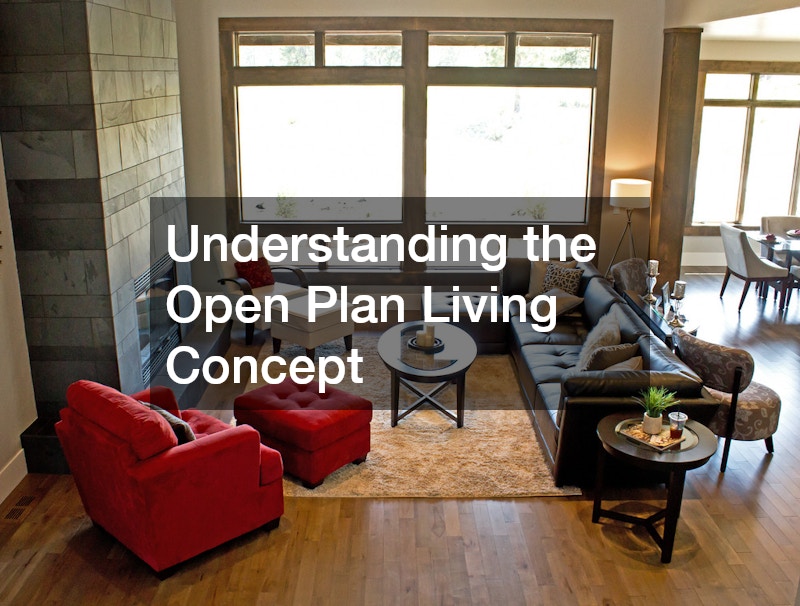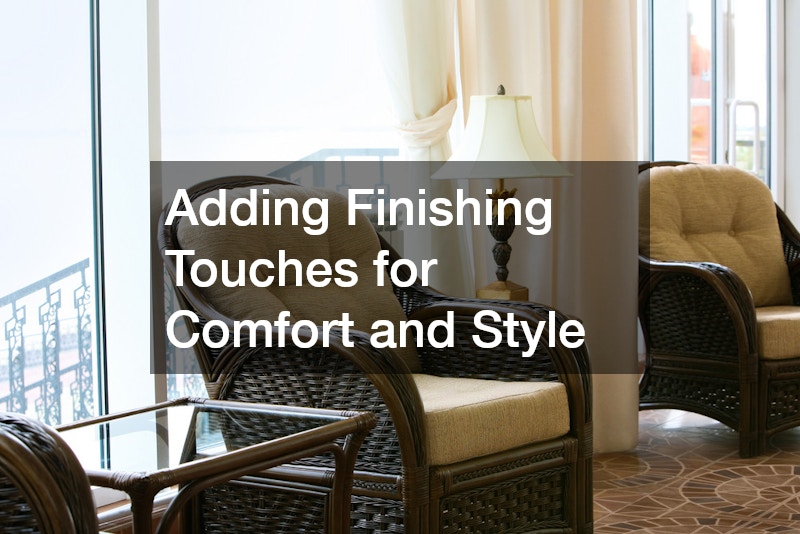Open plan living has become a defining feature of modern homes, celebrated for its sense of space, light, and sociability. But transitioning to this layout takes thoughtful planning and a willingness to rethink how your home works. From structural changes to interior design decisions, embracing an open plan for your home involves both creativity and practicality. This guide will walk you through the essential steps of remodeling your home to make the most of this versatile and inspiring style.
Understanding the Open Plan Living Concept

Open plan living is more than just knocking down walls—it’s a shift in how we think about the spaces where we live, connect, and move. Rather than treating rooms as isolated areas with specific, rigid functions, open plan design invites a more dynamic and flexible use of space. It encourages a layout where activities overlap and transitions between cooking, dining, relaxing, and entertaining happen naturally. This reimagined approach supports today’s fast-paced, multitasking lifestyles and promotes a sense of openness, accessibility, and inclusion within the home.
At its core, open plan living is about enhancing the overall feel of a home by breaking down physical and visual barriers. By merging the kitchen, living room, and dining area into one cohesive space, the design fosters a more communal atmosphere that feels airy, light, and welcoming. Natural light flows more freely without walls to block it, and the increased visibility throughout the space helps create a stronger sense of connection between people and activities. When thoughtfully executed, this kind of layout can transform even modest homes, making them feel significantly larger and more functional without adding square footage.
To truly understand the potential of open plans, it’s helpful to consult with professionals who specialize in reconfiguring space, such as residential contractors. They can assess the structural integrity of your home and help you determine which walls can safely be removed. Beyond demolition, they also provide insight into optimizing layout and ensuring the final design meets both aesthetic goals and building codes. By working with experienced experts, you’ll gain a clearer picture of what’s possible for your home and how to make open plan living a reality.
Assessing Your Home’s Remodeling Potential
Before committing to a major renovation, it’s essential to evaluate how well your current home can accommodate an open plan design. Not every space is immediately suited for an open layout, particularly if the existing structure includes significant load-bearing walls or has tight, confined proportions. Jumping into demolition without understanding these factors can lead to unexpected costs or design compromises that could have been avoided with early planning.
That’s why the first step in your remodeling journey should involve a detailed assessment of what you’re working with—both the limitations and the possibilities. Understanding your home’s structure, its existing layout, and how each space interacts with the others will help you make informed decisions. This foundational insight will shape your overall approach and ensure your vision for your open plan is realistic, safe, and achievable.
In some cases, embracing open plan living may require expanding your home’s footprint, not just rearranging what’s already there. That’s where experienced addition builders come into play. They can help you explore options for extending your home—whether it’s bumping out the kitchen, adding a new dining area, or building an entirely new open-concept space. Their expertise ensures any new construction blends seamlessly with the original structure, maximizing both form and function while paving the way for a truly open, connected living environment.
Choosing the Right Layout for Flow and Function
One of the most important aspects of open plan living is designing a layout that not only looks beautiful but also supports the way you live. A well-designed space allows for easy movement between zones—like cooking, dining, and relaxing—without feeling disjointed or cluttered. This balance between openness and functionality is key to avoiding a space that feels either too chaotic or too sparse. Carefully considering furniture placement, pathways, and sightlines helps create a layout that feels natural and intuitive.
When tackling this phase, collaborating with a custom home builder can make a world of difference. These professionals bring experience and creativity to the table, ensuring your layout complements your lifestyle, not just your aesthetic preferences. They can tailor every detail of your remodel to support true open plan living—from the positioning of kitchen islands and lighting fixtures to built-in shelving that subtly defines space without blocking it. Their goal is to create a layout that feels cohesive, comfortable, and distinctly yours.
Removing Walls to Maximize Space

One of the defining physical changes involved in open plan living is the removal of walls. By eliminating these barriers, you immediately unlock a greater sense of space and flow. Natural light travels farther, conversations happen more easily, and the entire home feels more connected. However, taking down walls isn’t just a matter of swinging a sledgehammer—it requires thoughtful consideration of structural supports, utilities, and insulation to ensure the space remains safe and energy-efficient.
This is where services like spray foam insulation installation services become incredibly valuable. Once walls come down, you may lose some of the insulation that was previously hidden inside them. Spray foam insulation helps retain energy efficiency in your open plan space, especially in areas like ceilings, exterior walls, and new framing elements. Not only does it keep your space comfortable year-round, but it also contributes to a quieter environment, which is particularly important when living areas are combined.
Enhancing Natural Light Throughout the Home
A hallmark of successful open plan living is the way it enhances natural light. Without walls to block windows or create dark corners, light can move freely through the space. This doesn’t just make your home feel bigger and more welcoming—it also contributes to your well-being by creating a brighter, more uplifting environment. Maximizing natural light often involves more than just removing walls; it may also include enlarging windows, adding skylights, or selecting reflective surfaces to amplify brightness.
While bringing in more natural light is visually appealing, it can also affect your home’s temperature and airflow. That’s why working with an HVAC contractor is a smart move during the remodel. Open plan living means fewer barriers to controlling heating and cooling, so your system needs to be optimized for even distribution. A qualified contractor can recommend upgrades or zoning strategies that keep your space comfortable and energy-efficient, ensuring your new layout looks great and feels just as good.
Blending Kitchen, Dining, and Living Areas
A successful open plan living space creates a seamless visual and functional connection between traditionally separate rooms. The kitchen, dining, and living areas should work together as one cohesive environment, each retaining its individual purpose while effortlessly blending with the others. This balance helps the space feel unified without losing the unique character of each zone.
Achieving this harmony requires careful design choices that unify the space. Coordinated materials, shared color palettes, and consistent lighting styles can create a sense of continuity throughout the area. By thoughtfully considering these elements, you can ensure that each area flows naturally into the next, giving the entire space a polished and cohesive feel.
Color is one of the most powerful tools for bringing cohesion to an open plan living area, and your local paint store can be a valuable resource during this phase. Staff can help you select complementary hues that subtly define each zone while keeping the overall space unified. Whether you’re going for a minimalist neutral palette or a bold, modern contrast, the right paint choices will help visually tie together your multifunctional space and reinforce the openness you’ve created.
Selecting Cohesive Colors and Materials

In open plan living, design choices need to be consistent across the entire space to maintain a unified look and feel. This is especially true when selecting colors and materials, as disjointed finishes can make the area feel busy or incomplete. Using complementary tones, consistent textures, and transitional materials can help create a seamless flow between different functional zones, allowing the eye to travel effortlessly from one space to another.
Flooring is one of the most important elements to get right, and working with professional flooring services ensures your choices support both form and function. A continuous flooring material—such as hardwood, polished concrete, or luxury vinyl—can tie the space together beautifully, while carefully selected rugs can help subtly define each area. Whether you’re going for a cozy, contemporary, or industrial vibe, choosing the right flooring reinforces the unified character that open plan living demands.
Incorporating Smart Storage Solutions
While open plan living offers an expansive sense of space and flexibility, it can also pose challenges when it comes to storage. Traditional rooms often come with built-in closets, cabinets, and designated storage spaces that make it easy to tuck away everyday items. However, in an open layout, where walls and rooms are removed, there’s a risk of clutter accumulating in plain view. Finding creative ways to store belongings without disrupting the visual flow of the space is crucial to maintaining the appeal of an open plan.
To solve this, smart storage solutions are essential. Integrated cabinetry, multifunctional furniture, and open shelving are all excellent options for storing items in a way that doesn’t compromise the openness of the room. For example, built-in cabinets can blend seamlessly with walls, while multifunctional furniture, such as ottomans or coffee tables with hidden storage, offers practicality without adding bulk. Open shelving can display decor or essential items in an organized, yet accessible way. These thoughtful solutions help maintain a clean, clutter-free environment while ensuring that everything you need is still within easy reach.
Many of these solutions benefit from the expertise of a local electrician, especially when incorporating built-in lighting or integrating tech-friendly features like charging stations and hidden wiring. With the right electrical planning, your storage can be both functional and beautifully lit, enhancing the overall aesthetics of your open plan living space. Lighting inside shelving, outlets tucked into cabinetry, and clever power access points can all help make your home more livable without sacrificing its open feel.
Creating Zones Without Adding Walls
One of the subtle arts of open plan living is defining individual zones—like cooking, lounging, and dining—without reverting to the use of walls. Visual and spatial cues can help give each area its own identity while maintaining the flow of the overall layout. You might use area rugs, lighting changes, furniture arrangement, or even ceiling treatments to mark boundaries. The goal is to support the function of each space without breaking the openness that makes this design style so appealing.
This type of spatial planning becomes especially important when installing features like kitchen islands, wet bars, or open-plan bathrooms, all of which require careful utility work. A skilled plumbing contractor can help ensure that plumbing elements are properly placed and integrated into the open layout without being disruptive. Their expertise allows you to incorporate necessary fixtures while preserving the clean lines and cohesive zones that define open plan living.
Adding Finishing Touches for Comfort and Style

The final stage in creating a successful open plan living space is adding the elements that make it feel like home. Finishing touches—such as soft furnishings, curated decor, and personalized accessories—can transform a visually impressive layout into a warm and welcoming environment. Textiles like throws, curtains, and cushions help add texture and softness, while plants and artwork bring life and personality to the open space.
To find pieces that balance form and function, visiting a local furniture shop can be a game-changer. These shops often offer a curated selection of furniture suited to multi-use, open spaces, with the added benefit of personalized recommendations. Whether it’s a sectional that subtly divides your lounge area or a statement dining table that anchors the center of your home, the right furniture enhances comfort and completes your open plan transformation.
Embracing open plan living is about more than making your home look modern—it’s about reshaping the way you live, connect, and move through your space. By breaking down traditional barriers, you create an environment that feels brighter, larger, and more social. This type of living encourages better communication, greater flexibility, and a more welcoming atmosphere for both everyday life and entertaining. Whether you’re starting small or going all in, open plan living offers a timeless and transformative way to elevate your home.



